Why is Davao City an important hub in the Philippines? This detailed guide dives into how the city harmonizes its urban growth with impressive landscapes such as Samal Island and the towering Mount Apo. Discover the city’s rich cultural fabric and economic vitality as we take you through Davao City’s evolution from a diverse heritage to an urbanized center fostering progress and tourism.
Key Takeaways
Davao City, a cultural and economic hub in the Philippines, is the largest city in terms of land area and highly urbanized, combining diverse cultural heritage with urban development.
The city showcases significant natural attractions like Samal Island, Mount Apo, and Davao Gulf, offering opportunities for varied tourist activities and contributing to its economy alongside agriculture, fishing and the service sector.
Davao City’s development has been shaped by the influence of various cultures, historical events including the legacy of Rodrigo Duterte’s leadership, and the city’s commitment to education with notable institutions enhancing its knowledge base.
Davao City: The Crown Jewel of Mindanao
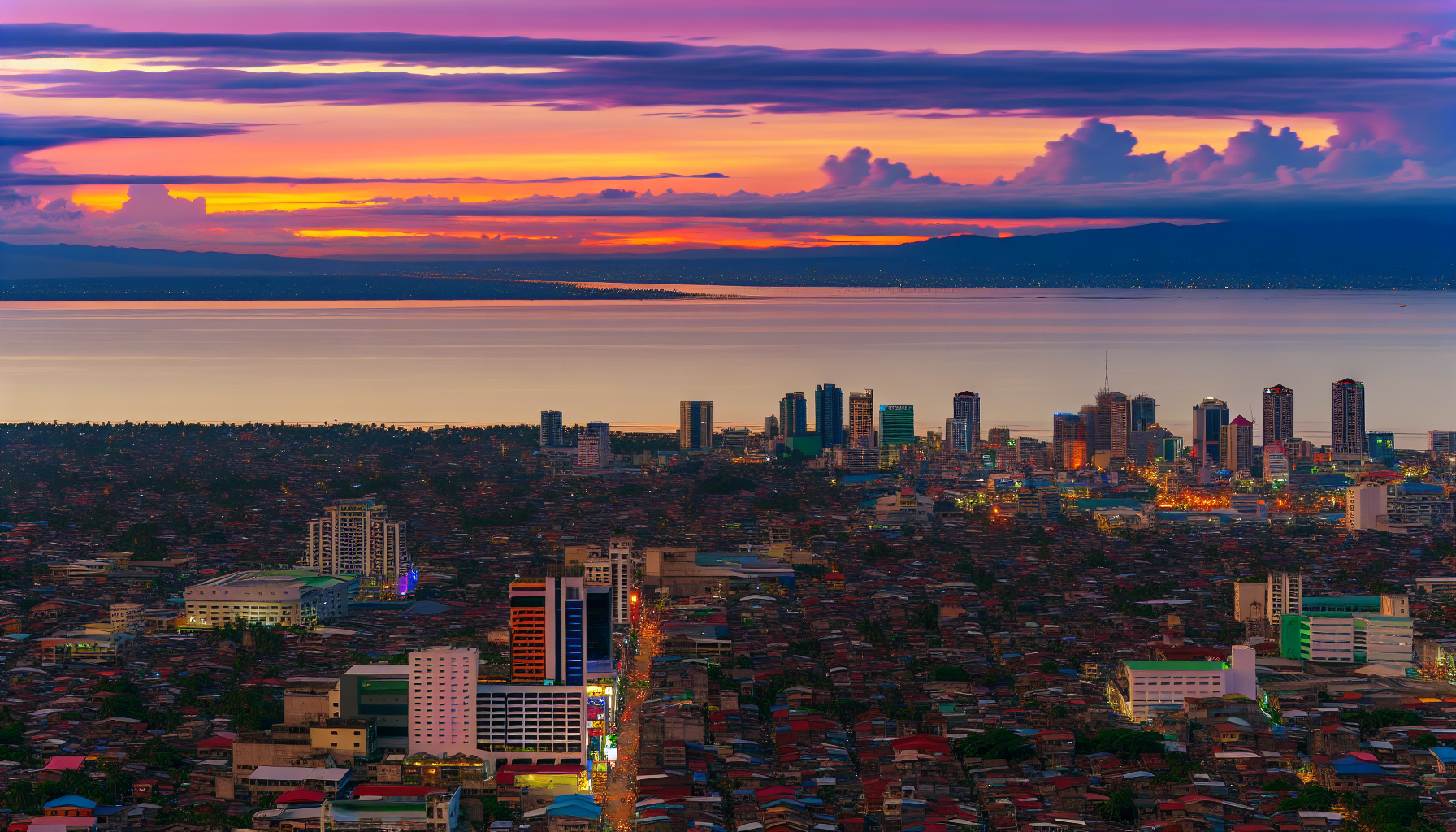
Situated in the southeastern portion of Mindanao, Davao City, the region’s crown jewel, blends urban development and natural wonders. This highly urbanized, culturally diverse city borders the Davao Gulf and the Philippine Sea. Serving as the regional center of Davao Region (Region XI), an administrative region, it features the Davao River, the third-largest river catchment in Southern Philippines.
Its strategic location, coupled with its cultural wealth and natural beauty, contributes to its allure as a must-visit destination in the Philippines.
History and origins
The roots of Davao City’s history lie in its indigenous tribes. Early inhabitants, such as:
Ata
Bagobo-Tagabawa
Klata
Obu-Manuvu
Matigsalug
Iranun
Kagan
Maranao
Maguindanaon
Sama
Tausug
shaped the city’s heritage, with the Bagobo being particularly notable, being indigenous to the area.
The city later flourished under the influence of Spanish settlers who established a colony, introducing organized settlement and leaving a lasting influence on its development. The impact of American colonization, particularly during World War II, and the influx of Japanese immigrants transformed Davao City into a bustling urban center, making it the largest city in the Philippines in terms of land area.
Cultural diversity
Davao City is a melting pot of cultures. The city’s diversity is attributed to a mosaic of cultural groups, including:
Dabawenyos
Migrants from different regions of the Philippines and the world
Indigenous lumads
Individuals from ethnic backgrounds such as American, Chinese, Korean, Indian, and Japanese.
Additionally, indigenous tribes like:
Ata
IRANUN
Kagan
KLATA-GUIANGAN
MAGUINDANAO
MARANAO
MATIGSALOG
OVU-MANUVO
Davao City, a highly urbanized city, is also the third most populous city in the Philippines. This vibrant mix of cultures is celebrated through various festivals such as Araw Ng Dabaw and Kadayawan, which showcase the city’s cultural heritage and foster unity among individuals from diverse backgrounds.
Geographical Wonders of Davao City
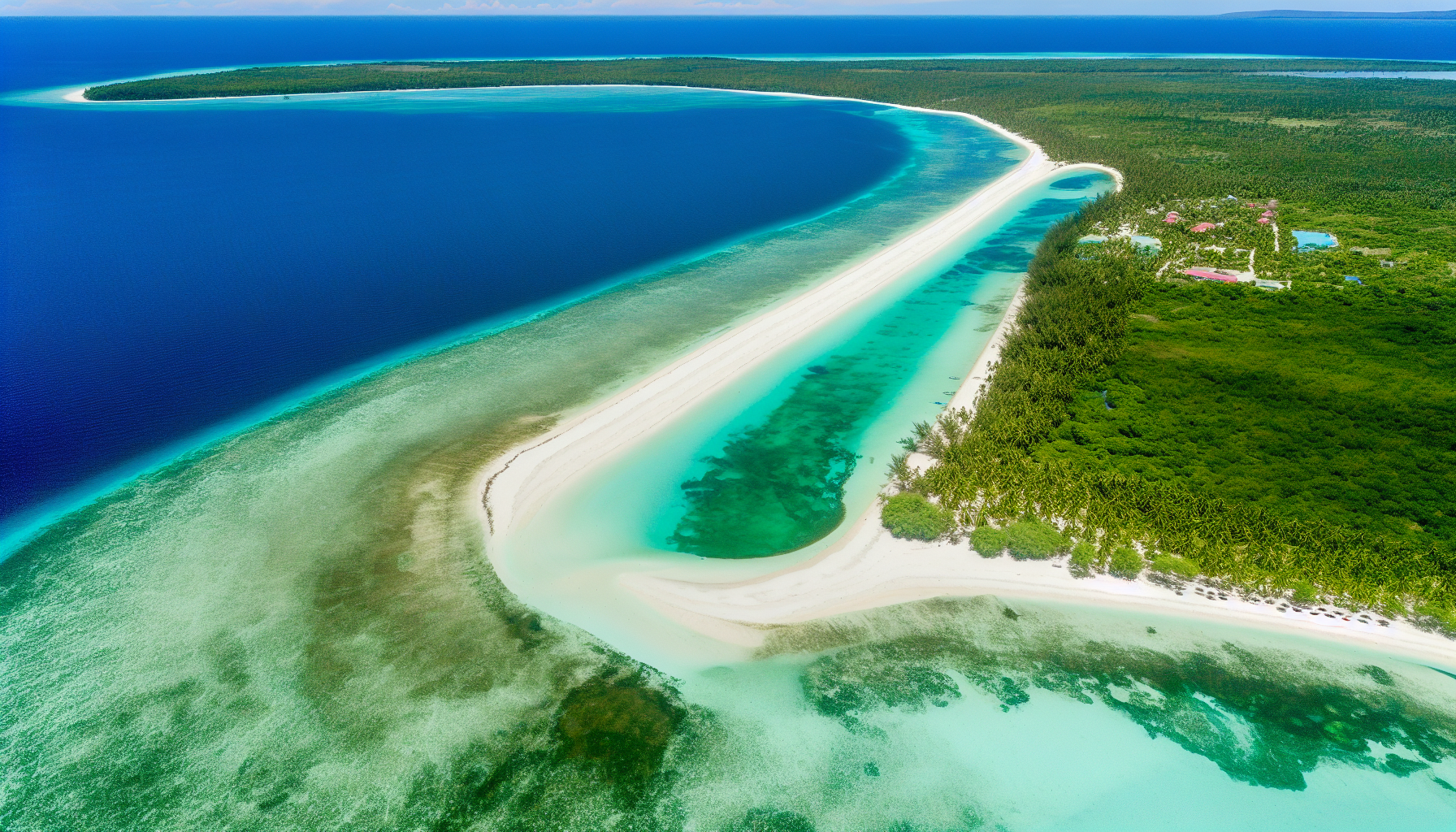
Beyond its people and culture, Davao City flaunts breathtaking geographical wonders. It houses Samal Island, a paradisiacal spot with captivating beaches and viewpoints, and Mount Apo, the highest active volcano in the Philippines.
The city is also known for the Davao Gulf and Pakiputan Strait, which are vital sources of livelihood for the locals and contribute to the city’s vibrant fishing industry.
Samal Island
Samal Island, also known as the Island Garden City of Samal, is one of Davao City’s most popular tourist destinations. The island is bestowed with stunning beaches, breathtaking waterfalls, and mesmerizing viewpoints that showcase the island’s natural beauty. Visitors to Samal Island have the opportunity to explore:
Remarkable caves with natural formations
Exquisite white sandy beaches such as Pearl Island and Kaputian Beach
Unique wildlife at the Giant Clam Sanctuary and Monfort Bat Sanctuary
The natural environment of Samal Island is preserved through the establishment of marine protected areas, emphasizing the city’s commitment to conserving its diverse biodiversity.
Mount Apo
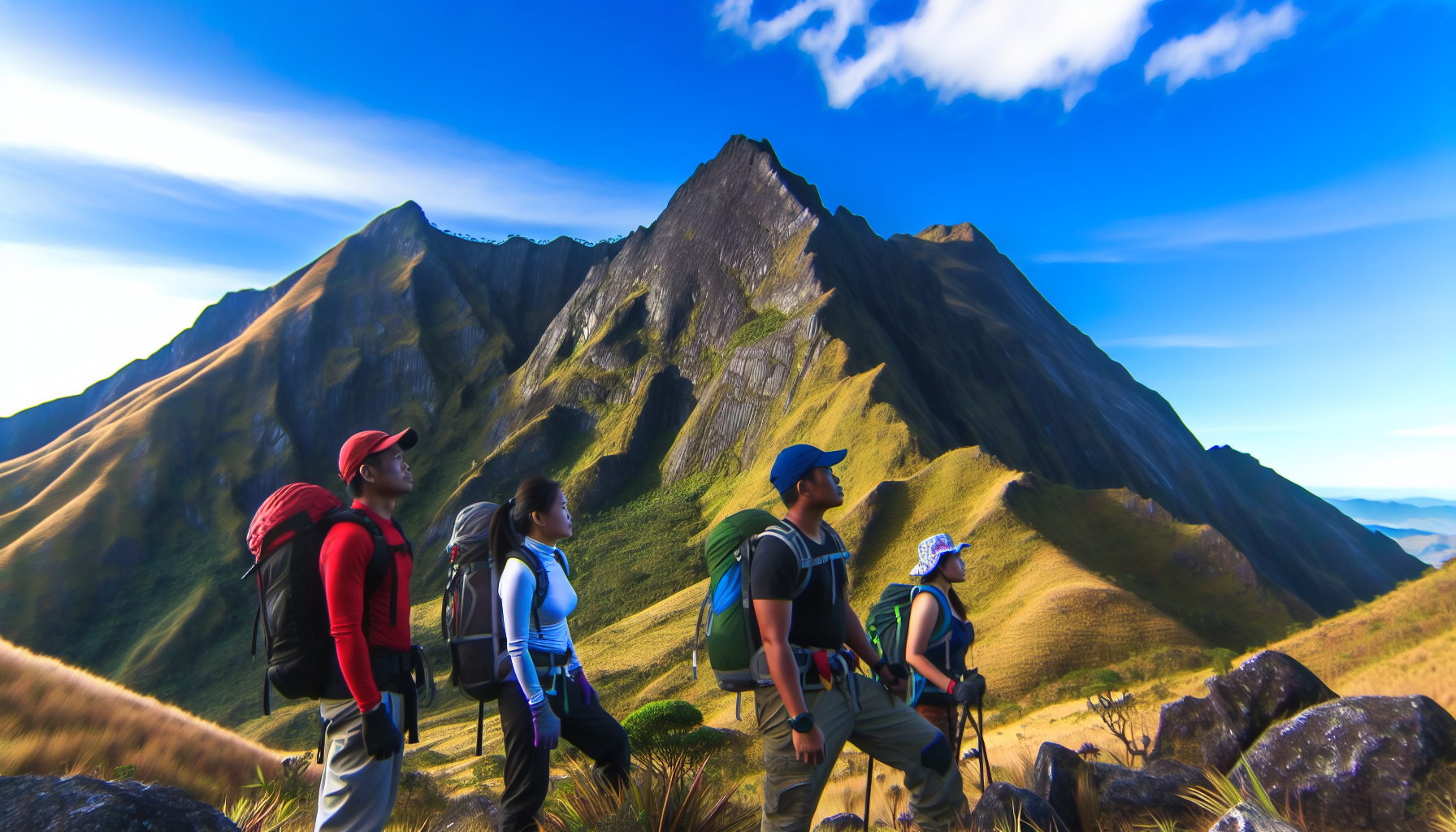
Mount Apo, the highest peak in the Philippines, is another geographical marvel that contributes to the beauty of Davao City. It is renowned for being an active volcano and is home to distinctive flora and fauna such as Apomys insignis, Urogale everetti, and a diverse array of ornamental species such as orchids and ferns. For the adventurous, Mount Apo offers challenging treks and the reward of breathtaking views from the summit.
Davao Gulf and Pakiputan Strait
The Davao Gulf and Pakiputan Strait are other geographical wonders that define Davao City. These water bodies are abundant with marine biodiversity, including a varied assortment of fish species, cetacean species, and century-old giant clams. The Davao Gulf and Pakiputan Strait offer ample opportunities for aquatic activities, such as scuba diving, snorkeling, boat tours, hiking, camping, and wildlife tours.
They also facilitate access to the city’s port of entry, which serves as a major driver of economic activity, under the guidance of the city government.
Economic Growth and Development
Mirroring the dynamism of its culture and geography, Davao City’s economy thrives on diverse sectors, including:
Agriculture
Fishing
Call centers
Online outsourcing
Tourism
Not only does this diversity foster the city’s economic resilience, but it also provides ample opportunities for investment and employment.
Agriculture and fishing
Agriculture and fishing are the backbone of Davao City’s economy. The city is an agri-industrial hub, producing a range of crops such as Cavendish bananas, pineapple, and papaya.
The city’s abundant water supply also supports a thriving fishing industry, which has evolved to incorporate modern fish processing and the establishment of the Davao Fish Port Complex.
Call centers and online outsourcing
The call center and online outsourcing industries in Davao City have seen remarkable growth over the years. These sectors have not only generated significant employment opportunities but have also attracted substantial private and foreign investment. The city’s supportive local government, skilled workforce, and state-of-the-art infrastructure make it an attractive destination for BPO companies.
Tourism
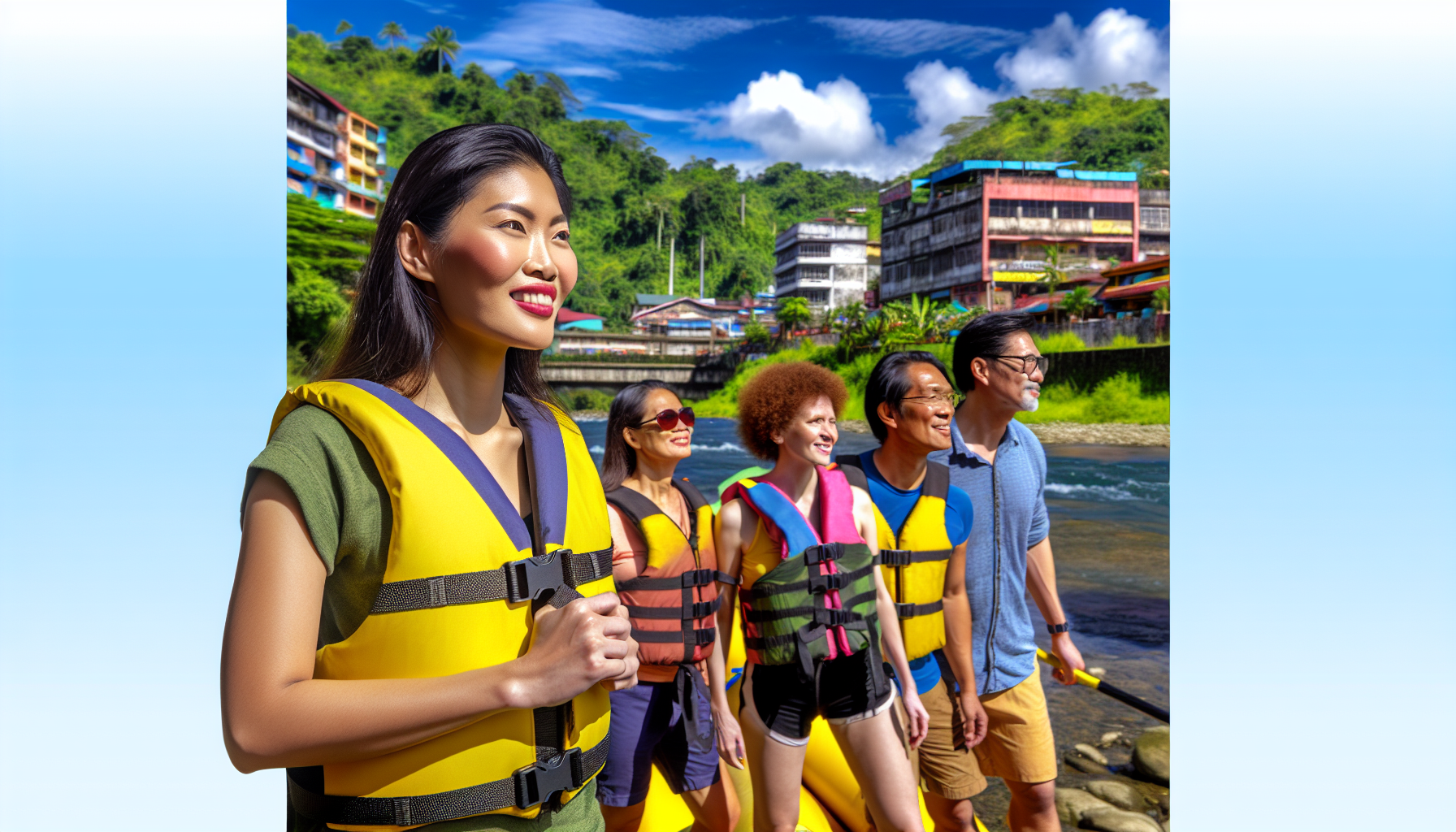
Tourism is another major driver of Davao City’s economy. The city’s rich cultural heritage, natural attractions, and vibrant festivals draw tourists from across the globe. The local government’s efforts to restore Davao City as a prominent tourism destination in the country have significantly boosted this sector, leading to high growth rates in the accommodation and food industries and the creation of numerous job opportunities.
Education and Institutions
Davao City, recognizing that knowledge is power, hosts numerous educational institutions. These establishments, ranging from the esteemed Philippine Women’s College to public and private universities, offer an array of learning opportunities catering to diverse educational aspirations.
Philippine Women’s College
The Philippine Women’s College in Davao City stands out for its commitment to providing quality education for women. Founded in 1953, the college offers a variety of courses such as:
Bachelor of Science in Accountancy
BS in Psychology
Bachelor of Arts in Broadcasting
Bachelor of Physical Education
and many more
The college has been acknowledged for its academic excellence and has bestowed awards and honors upon outstanding achievers.
Other notable institutions
Davao City is home to several reputable educational institutions, including:
Philippine Women’s College
University of the Philippines Mindanao
University of Southeastern Philippines
Ateneo de Davao University
University of Mindanao
These institutions offer a diverse range of undergraduate programs, fostering academic excellence and shaping future leaders.
The Legacy of Rodrigo Duterte
Rodrigo Duterte, having served as Davao City’s mayor and currently the president of the Philippines, has profoundly influenced the city. His controversial crime-fighting approaches and substantial infrastructure projects continue to sculpt Davao City’s development and landscape.
Crime-fighting tactics
Duterte’s crime-fighting tactics, characterized by a stringent stance against crime, corruption, and drug trafficking, have been a subject of global debate. His methods, while criticized for alleged extrajudicial killings, are credited with making Davao City a safer place.
The transformation of Davao City into a safer area is attributed to Duterte’s controversial crime-fighting tactics that have significantly decreased crime rates.
Infrastructure projects
Duterte’s tenure as mayor also saw significant infrastructure development in the city. Projects like the airport development, the Davao City Coastal Bypass Road Project, and the Isla Verde port development have greatly enhanced the city’s economic growth and modernization.
Top Attractions and Activities in Davao City
A hub of attractions and activities, Davao City caters to:
History enthusiasts, with offerings like the Davao Museum, highlighting the city’s diverse cultures and rich history
Outdoor adventurers, with opportunities for outdoor escapades in natural reserves
Festival aficionados, with lively festivals celebrating cultural heritage and abundant harvests
Philippines Davao City, situated in the province of Davao del Norte, guarantees a memorable experience for all, while being just a stone’s throw away from Davao del Sur.
Davao Museum
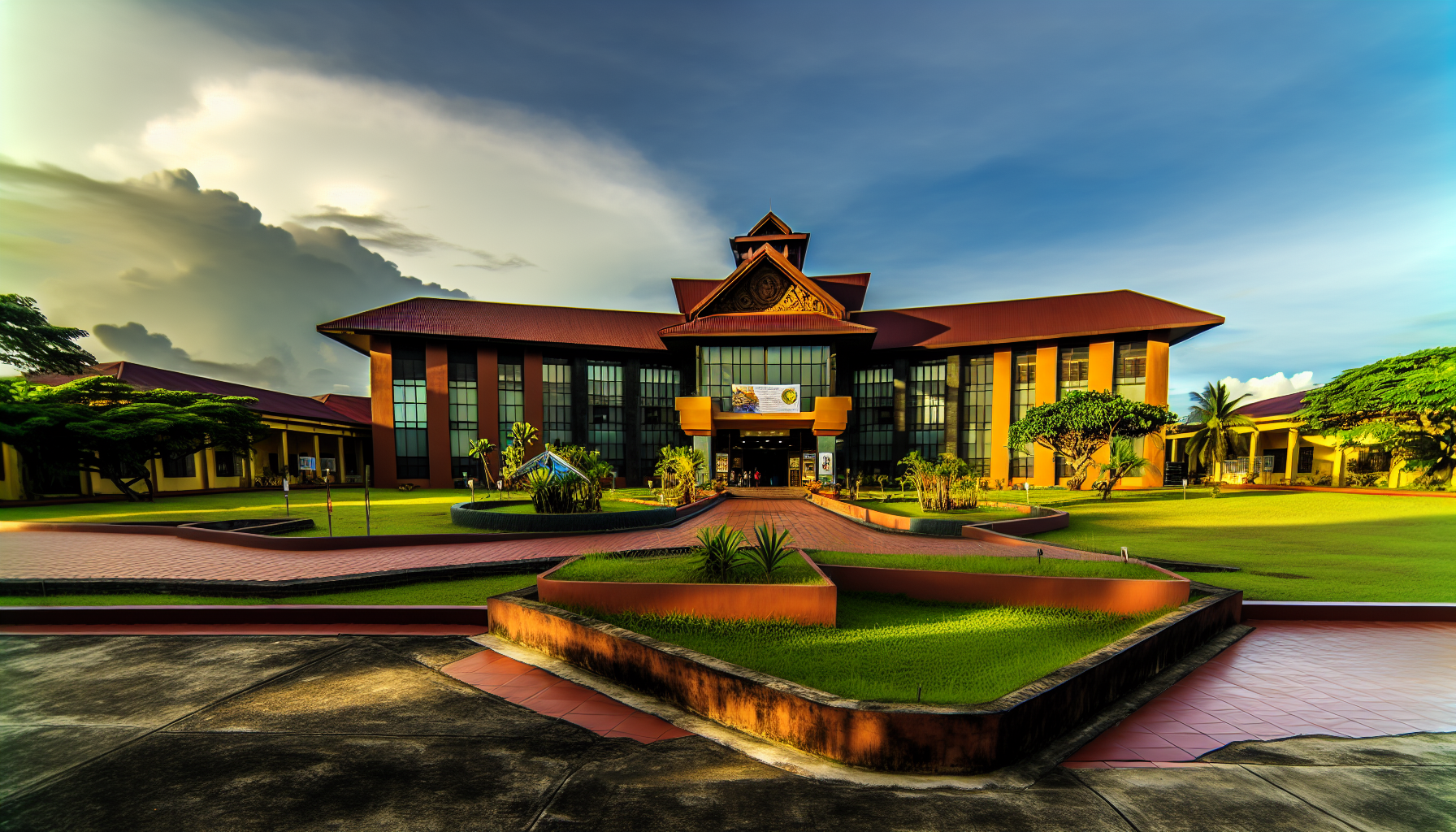
The Davao Museum, a must-visit attraction in the city, provides a window into the city’s rich history and diverse cultures. It showcases a wide array of exhibits, including the D’ Bone Collector Museum exhibit, which features a diverse collection of animal specimens from various parts of the world, and cultural artifacts from the city’s indigenous tribes.
Outdoor activities
For those who love the outdoors, Davao City is a paradise. It offers a variety of outdoor activities such as trekking, diving, and exploring nature reserves. Trekking routes like Viper’s Peak Trail and Eucalyptus-VietCong Trail provide a thrilling adventure for hiking enthusiasts.
Diving locations around Samal Island offer a glimpse into the city’s rich marine biodiversity. And for those who prefer a more laid-back activity, exploring the city’s nature reserves like Malagos Garden Resort and Philippine Eagle Center offers a serene retreat away from the bustling city.
Festivals and events
Davao City is also known for its colorful festivals and events. Some of the notable ones include:
The Kadayawan Festival, an annual celebration of the city’s cultural heritage and bountiful harvests, which attracts visitors from all over the world.
The Araw ng Dabaw, which celebrates the city’s foundation day.
The Pasko Fiesta, which brings joy and cheer during the Christmas season.
These events showcase the vibrant culture and traditions of Davao City.
Summary
From its rich history and diverse cultures to its geographical wonders, thriving economy, and vibrant festivals, Davao City is a testament to the Philippines’ beauty and resilience. Whether you’re an adventurer seeking thrilling outdoor activities, a history buff looking to delve into the city’s past, or a cultural enthusiast eager to experience local traditions, Davao City has something for everyone. As the largest city in Mindanao, Davao City continues to shine as a gem in the heart of the Philippines, offering a unique blend of urban development and natural beauty that captivates every visitor.
Frequently Asked Questions
Is Davao City a good place to live?
Yes, Davao City is a good place to live due to its reputation as one of the safest cities in the Philippines with a low crime rate and effective safety measures for its residents.
What language does Davao City speak?
Davao City now primarily speaks a local dialect of the Cebuano language, called Davaoeo Cebuano.
Why is Davao City beautiful?
Davao City is beautiful due to its white sand beaches, majestic mountains, and proximity to nature. The city also offers spectacular natural beauty, including forests, the highest mountain in the Philippines – Mount Apo, and beautiful coral islands.
Why is Davao famous?
Davao is famous for being the Orchid Capital of the Philippines and for its abundant fruits, including being a take-off point for climbing Mt. Apo.
What is Davao City known for?
Davao City is known for its rich history, cultural diversity, natural wonders, thriving economy, and vibrant festivals.

